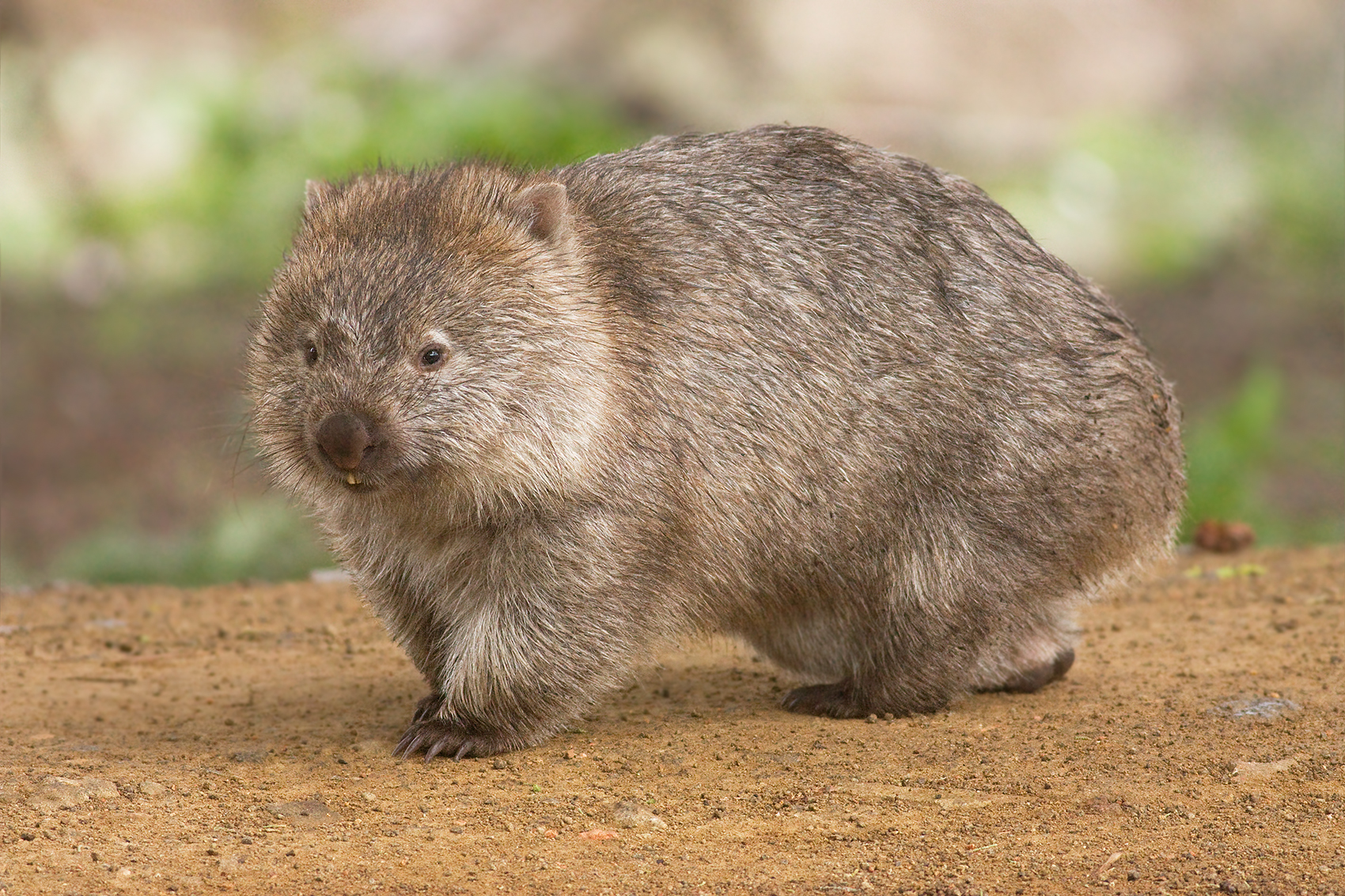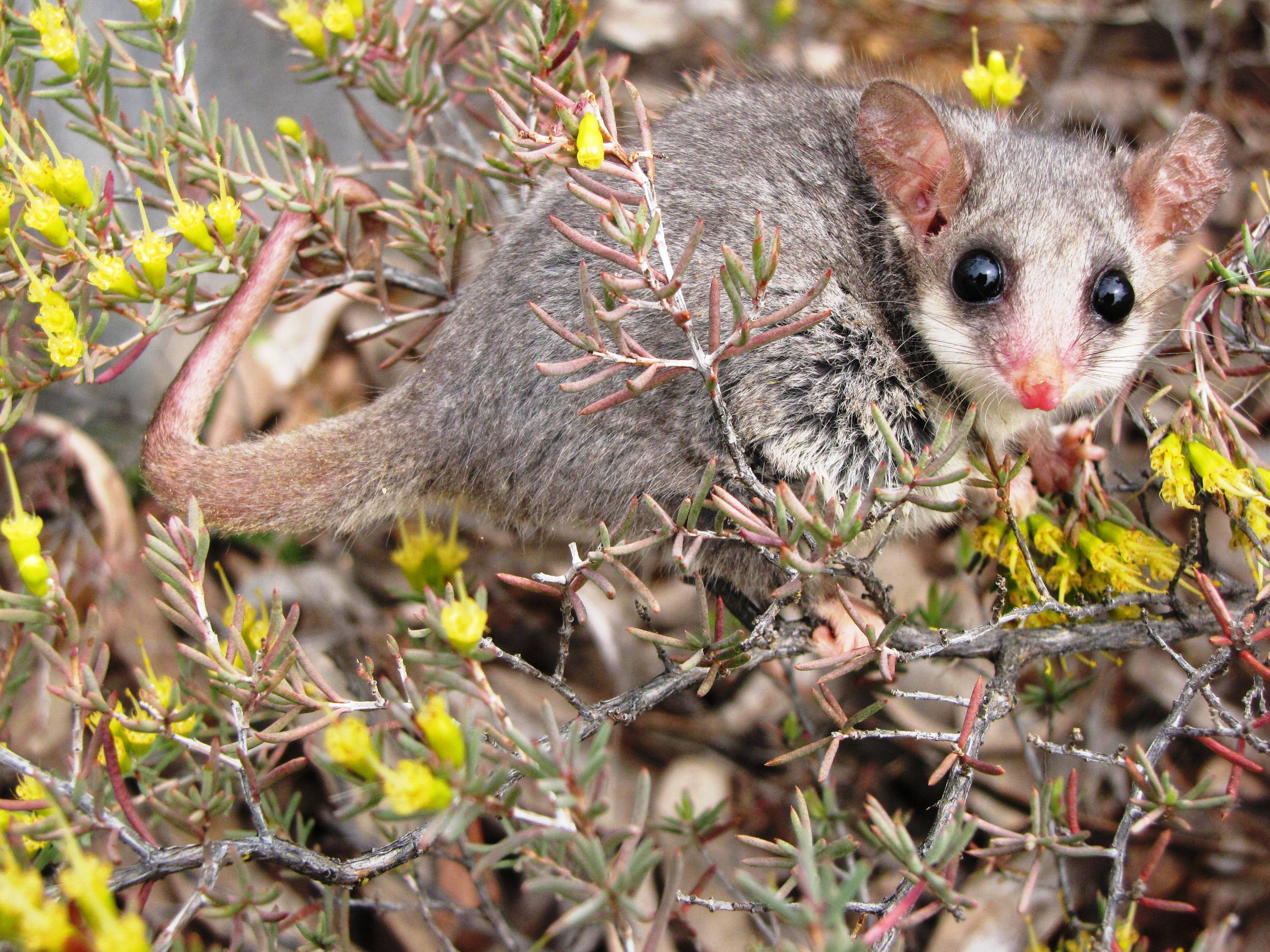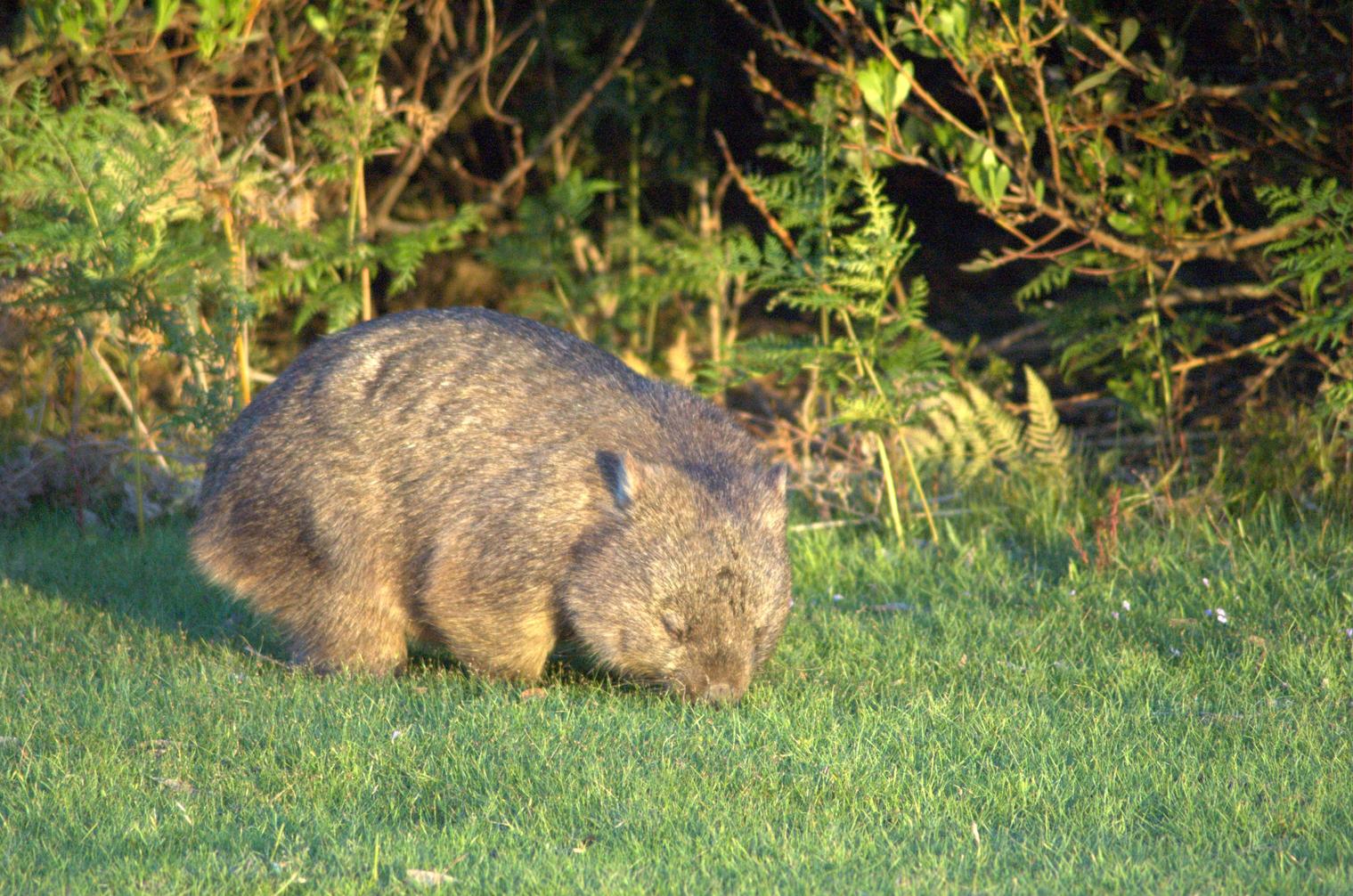|
Diprotodont
Diprotodontia (, from Greek "two forward teeth") is the largest extant order of marsupials, with about 155 species, including the kangaroos, wallabies, possums, koala, wombats, and many others. Extinct diprotodonts include the hippopotamus-sized ''Diprotodon'', and ''Thylacoleo'', the so-called "marsupial lion". Characteristics Living diprotodonts are almost all herbivores, as were most of those that are now extinct. A few insectivorous and omnivorous diprotodonts are known, and the Potoridae are almost unique among vertebrates in being largely fungivorous, but these seem to have arisen as relatively recent adaptations from the mainstream herbivorous lifestyle. The extinct thylacoleonids ("marsupial lions") are the only known group to have exhibited carnivory on a large scale. Diprotodonts are restricted to Australasia. The earliest known fossils date to the late Oligocene, but their genesis certainly lies earlier than this, as large gaps occur in Australia's fossil record, w ... [...More Info...] [...Related Items...] OR: [Wikipedia] [Google] [Baidu] |
Diprotodon
''Diprotodon'' (Ancient Greek: "two protruding front teeth") is an extinct genus of marsupial from the Pleistocene of Australia, containing one species, ''D. optatum''. The earliest finds date to 1.77 million to 780,000 years ago, but most specimens are dated to after 110,000 years ago. Its massive fossils were first unearthed in 1830 in Wellington Caves, New South Wales, before any serious scientists were active on the continent, and were variably guessed to belong to rhinos, elephants, hippos, or dugongs. ''Diprotodon'', formally described by Sir Richard Owen in 1838, was the first named Australian fossil creature, and set Owen on a path to becoming the foremost authority of his time on other marsupials and Australian megafauna so enigmatic to European science. ''Diprotodon'' is the largest known marsupial to have ever lived, far dwarfing its closest living relatives, wombats and koalas. It grew as large as at the shoulders, over from head to tail, and possibly almost in w ... [...More Info...] [...Related Items...] OR: [Wikipedia] [Google] [Baidu] |
Koala
The koala or, inaccurately, koala bear (''Phascolarctos cinereus''), is an arboreal herbivorous marsupial native to Australia. It is the only extant representative of the family Phascolarctidae and its closest living relatives are the wombats. The koala is found in coastal areas of the mainland's eastern and southern regions, inhabiting Queensland, New South Wales, Victoria, and South Australia. It is easily recognisable by its stout, tailless body and large head with round, fluffy ears and large, spoon-shaped nose. The koala has a body length of and weighs . Fur colour ranges from silver grey to chocolate brown. Koalas from the northern populations are typically smaller and lighter in colour than their counterparts further south. These populations possibly are separate subspecies, but this is disputed. Koalas typically inhabit open ''Eucalyptus'' woodland, as the leaves of these trees make up most of their diet. Because this eucalypt diet has limited nutritional and calor ... [...More Info...] [...Related Items...] OR: [Wikipedia] [Google] [Baidu] |
Vombatiformes
The Vombatiformes are one of the three suborders of the large marsupial order Diprotodontia. Seven of the nine known families within this suborder are extinct; only the families Phascolarctidae, with the koala, and Vombatidae, with three extant species of wombat, survive. Among the extinct families are the Diprotodontidae, which includes the rhinoceros sized ''Diprotodon'', believed to be the largest marsupials ever, as well as the "marsupial lions" Thylacoleonidae and "marsupial tapirs" Palorchestidae. "Vombatiformes" is neo-Latin for "wombat-shaped things", and took its name from its type family. The suborder Vombatiformes, with its closely related members and their compact body form, contrasts with the other two diprotodont suborders, the Macropodiformes: kangaroos, wallabies, and the quokka; and the Phalangeriformes: possums, including the gliders such as the wrist-winged gliders. The koala and wombats are believed by many biologists to share a common ancestor and to have di ... [...More Info...] [...Related Items...] OR: [Wikipedia] [Google] [Baidu] |
Thylacoleo
''Thylacoleo'' ("pouch lion") is an extinct genus of carnivorous marsupials that lived in Australia from the late Pliocene to the late Pleistocene (2 million to 46 thousand years ago). Some of these marsupial lions were the largest mammalian predators in Australia of their time, with ''Thylacoleo carnifex'' approaching the weight of a lioness. The estimated average weight for the species ranges from . Taxonomy The genus was first published in 1859, erected to describe the type species ''Thylacoleo carnifex''. The new taxon was established in examination of fossil specimens provided to Richard Owen. The familial alliance takes its name from this description, the so-called marsupial lions of Thylacoleonidae. The colloquial name "marsupial lion" alludes to the superficial resemblance to the placental lion and its ecological niche as a large predator. ''Thylacoleo'' is not closely related to the modern lion (''Panthera leo''). Genus: ''Thylacoleo'' (''Thylacopardus'') – Australia' ... [...More Info...] [...Related Items...] OR: [Wikipedia] [Google] [Baidu] |
Marsupials
Marsupials are any members of the mammalian infraclass Marsupialia. All extant marsupials are endemic to Australasia, Wallacea and the Americas. A distinctive characteristic common to most of these species is that the young are carried in a pouch. Marsupials include opossums, Tasmanian devils, kangaroos, koalas, wombats, wallabies, bandicoots, and the extinct thylacine. Marsupials represent the clade originating from the last common ancestor of extant metatherians, the group containing all mammals more closely related to marsupials than to placentals. They give birth to relatively undeveloped young that often reside in a pouch located on their mothers' abdomen for a certain amount of time. Close to 70% of the 334 extant species occur on the Australian continent (the mainland, Tasmania, New Guinea and nearby islands). The remaining 30% are found in the Americas—primarily in South America, thirteen in Central America, and one species, the Virginia opossum, in North America, nor ... [...More Info...] [...Related Items...] OR: [Wikipedia] [Google] [Baidu] |
Phalangeriformes
Phalangeriformes is a paraphyletic suborder of about 70 species of small to medium-sized arboreal marsupials native to Australia, New Guinea, and Sulawesi. The species are commonly known as possums, gliders, and cuscus. The common name "possum" for various Phalangeriformes species derives from the creatures' resemblance to the opossums of the Americas (the term comes from Powhatan language ''aposoum'' "white animal", from Proto-Algonquian *''wa·p-aʔɬemwa'' "white dog"). However, although opossums are also marsupials, Australasian possums are more closely related to other Australasian marsupials such as kangaroos. Phalangeriformes are quadrupedal diprotodont marsupials with long tails. The smallest species, indeed the smallest diprotodont marsupial, is the Tasmanian pygmy possum, with an adult head-body length of and a weight of . The largest are the two species of bear cuscus, which may exceed . Phalangeriformes species are typically nocturnal and at least partially arbo ... [...More Info...] [...Related Items...] OR: [Wikipedia] [Google] [Baidu] |
Potoridae
Potoroidae is a family of marsupials, small Australian animals known as Bettong, bettongs, Potoroo, potoroos, and rat-kangaroos. All are rabbit-sized, brown, jumping marsupials and resemble a large rodent or a very small wallaby. Taxonomy The potoroids are smaller relatives of the kangaroos and wallabies, and may be ancestral to that group. In particular, the teeth show a simpler pattern than in the Macropodidae, kangaroo family, with longer upper incisors, larger canine (tooth), canines, and four cusps on the Molar (tooth), molars. However, both groups possess a wide diastema (dentistry), diastema between the incisors and the cheek teeth, and the potoroids have a similar dental formula to their larger relatives: In most respects, however, the potoroids are similar to small wallabies. Their hind feet are elongated, and they move by hopping, although the adaptations are not as extreme as they are in true wallabies, and, like rabbits, they often use their fore limbs to move abou ... [...More Info...] [...Related Items...] OR: [Wikipedia] [Google] [Baidu] |
Macropodiformes
The Macropodiformes , also known as macropods, are one of the three suborders of the large marsupial order Diprotodontia. They may in fact be nested within one of the suborders, Phalangeriformes. Kangaroos, wallabies and allies, bettongs, potoroos and rat kangaroos are all members of this suborder. Classification * Superfamily Macropodoidea **Family †Balbaridae: (basal quadrupedal kangaroos) *** Genus †''Galanarla'' *** Genus †''Nambaroo'' *** Genus †'' Wururoo'' *** Genus †''Ganawamaya'' *** Genus †'' Balbaroo'' ** Family Hypsiprymnodontidae: (musky rat-kangaroo) *** Subfamily Hypsiprymnodontinae **** Genus ''Hypsiprymnodon'' *****Musky rat-kangaroo, ''Hypsiprymnodon moschatus'' *****†''Hypsiprymnodon bartholomaii'' *****†''Hypsiprymnodon philcreaseri'' *****†''Hypsiprymnodon dennisi'' *****†''Hypsiprymnodon karenblackae'' *** Subfamily † Propleopinae **** Genus †''Ekaltadeta'' *****†'' Ekaltadeta ima'' *****†'' Ekaltadeta jamiemulveneyi' ... [...More Info...] [...Related Items...] OR: [Wikipedia] [Google] [Baidu] |
Sulawesi Bear Cuscus
The Sulawesi bear cuscus, also known as the Sulawesi bear phalanger (''Ailurops ursinus''), is a species of arboreal marsupial in the family Phalangeridae that is endemic to Sulawesi and nearby islands in Indonesia. It lives in tropical moist lowland forest at elevations up to and is diurnal, folivorous and often found in pairs. ''A. ursinus'' is threatened by hunting, collection for the pet trade and deforestation Deforestation or forest clearance is the removal of a forest or stand of trees from land that is then converted to non-forest use. Deforestation can involve conversion of forest land to farms, ranches, or urban use. The most concentrated .... Gallery File:Sulawesi trsr DSCN0548 v1.JPG, Male in Tangkoko Nature Reserve File:Sulawesi trsr DSCN0549 v1.JPG, Female and infant on fruiting ''Ficus'' tree in Tangkoko File:Ailurops ursinus (1).JPG, Bear cuscus in Sulawesi File:Ailurops ursinus (4).JPG, ''Ailurops ursinus'' in Tangkoko References Possums ... [...More Info...] [...Related Items...] OR: [Wikipedia] [Google] [Baidu] |
Australian Megafauna
The term Australian megafauna refers to the megafauna in Australia during the Pleistocene Epoch. Most of these species became extinct during the latter half of the Pleistocene, and the roles of human and climatic factors in their extinction are contested. There are similarities between the prehistoric Australian megafauna and some mythical creatures from the Aboriginal Dreamtime. Causes of extinction Many modern researchers, including Tim Flannery, think that with the arrival of early Aboriginal Australians (around 70,000~65,000 years ago), hunting and the use of fire to manage their environment may have contributed to the extinction of the megafauna. Increased aridity during peak glaciation (about 18,000 years ago) may have also contributed, but most of the megafauna were already extinct by this time. Others, including Steve Wroe, note that records in the Australian Pleistocene are rare, and there is not enough data to definitively determine the time of extinction of many o ... [...More Info...] [...Related Items...] OR: [Wikipedia] [Google] [Baidu] |
Macropus Fuliginosus Fuliginosus-3
''Macropus'' is a marsupial genus in the family Macropodidae. It has two extant species of large terrestrial kangaroos. The term is derived from the Ancient Greek μάκρος, ''makros'' "long" and πους, ''pous'' "foot". Thirteen known extinct species are recognised. The type species is the eastern grey kangaroo. Taxonomy In 2019, a reassessment of macropod taxonomy determined that ''Osphranter'' and ''Notamacropus'', formerly considered subgenera, should be moved to the genus level. This change was accepted by the Australian Faunal Directory in 2020. Extant Species Fossils A currently-unnamed Pleistocene ''Macropus'' species from Australia was the largest kangaroo ever, with an estimated mass of around 274 kg (~604 lb). * †''Macropus dryas'' * †''Macropus gouldi'' * †''Macropus narada'' * †''Macropus piltonensis'' * †''Macropus rama'' * †''Macropus woodsi'' * †''Macropus pavana'' * †''Macropus thor'' * †'' Macropus ferragus'' * †''Macropus m ... [...More Info...] [...Related Items...] OR: [Wikipedia] [Google] [Baidu] |
Wombat
Wombats are short-legged, muscular quadrupedal marsupials that are native to Australia. They are about in length with small, stubby tails and weigh between . All three of the extant species are members of the family Vombatidae. They are adaptable and habitat tolerant, and are found in forested, mountainous, and heathland areas of southern and eastern Australia, including Tasmania, as well as an isolated patch of about in Epping Forest National Park in central Queensland. Etymology The name "wombat" comes from the now-nearly extinct Dharug language spoken by the aboriginal Dharug people, who originally inhabited the Sydney area. It was first recorded in January 1798, when John Price and James Wilson, a white man who had adopted aboriginal ways, visited the area of what is now Bargo, New South Wales. Price wrote: "We saw several sorts of dung of different animals, one of which Wilson called a "Whom-batt", which is an animal about 20 inches high, with short legs and a thick bod ... [...More Info...] [...Related Items...] OR: [Wikipedia] [Google] [Baidu] |
_BHL21155651.jpg)

.jpg)
_(white_background).jpg)



